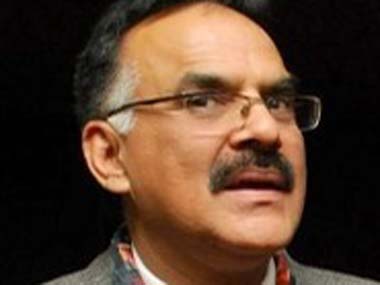St. Petersburg:The Finance Ministry is once again upset with the poor souls at Standard & Poors, for having dared to express a 33 percent possibility of India’s rating being downgraded in three years.
A visibly upset economic affairs secretary Arvind Mayaram said that the maths behind this conclusion was “questionable” and was nothing short of crystal ball gazing. Arguing that there was no case for downgrading India, the official, who spoke with the media on way to the G-20 Summit, rubbed it in further by adding that if a growth slowdown was the cause for a rating action, then the agency may just as well “downgrade the whole world”.
There is a much bigger message that India is carrying to the eighth gathering of the world’s top 20 nations. No less than Prime Minister Manmohan Singh himself will deliver it once the Summit gets underway on Thursday at the historical city of St. Petersburg, which among other keystones, is also the birthplace of Vladmir Putin, the host of the Summit.
[caption id=“attachment_1087755” align=“alignleft” width=“380”]  Arvind Mayaram[/caption]
Singh, who recently told Parliament that he was heard with respect in the G-20 council, shall deliver a simple, if plaintive message to Barack Obama: ask your Federal Reserve to keep printing more money. “I will emphasise on the need for an orderly exit from the unconventional monetary policies being pursued by the developed world for the last few years, so as to avoid damaging the growth prospects of the developing world”, the PM said before leaving India.
He added that though there were encouraging signs of growth in the industrialised world, “there is a slowdown in emerging economies, which are facing the adverse impact of the significant capital outflows”. Clearly, the party is about to get over and some guests just don’t want to leave.
Impact Shorts
More ShortsThis remark, coupled with those of officials later, frame the dilemma neatly. In Mayaram’s words, if the excess liquidity of the Greenspan years and the post-crash recovery by 2010 “was bad for India”, the anticipated “pullback shall also create problems”. China, Brazil and even South Africa are expected to join hands with India and seek a more orderly and predictable pullback from the stimulus.
Even the plain speaking Raghuram Rajan has decided to deliver his first review of monetary policy on September 20. By then, the US Federal Reserve would have hopefully made it clear, and in understandable English, what exactly it means by “tapering”.
So, does it look like that India has plan B for another “end-of-the-world financial cataclysm”? History suggests otherwise, but the government seems to suggest that tackling the domestic end of the ongoing crisis will help the country ride out of the woods. It is in this regard that Mayaram advances a few arguments, the crux of which is that the Indian economy would grow at 5.5% this fiscal, in line with the government and central bank estimates.
This on the back of a fresh spending drive, largely by the central government as well the states, several of whom are headed for assembly elections. Nearly half of the budgeted Plan expenditure of almost Rs 5.55 lakh crore has been released to states and should be spent over the next six to nine months, neatly coinciding with the run up to the general election.
This by itself, and not accounting for election expenditure on the “private” account via cash, should be big pump primer for growth by this December or thereabouts. The comparison with what happened last year, after P. Chidambaram, assumed office as Finance Minister, is even more stark. As Mayaram puts it, the first quarter GDP growth dip came on the back of a sharp 120 bps contraction in the FY13 deficit. “No other country in the world has done something as drastic. That was the reason for the growth dip in the first quarter of the current fiscal, but the second and third quarters should be better”, he says.
The good monsoon is the second silver lining and Mayaram says there has been a nine percent expansion in the farm sowing area, an indicator of a bumper harvest by Diwali. This, he predicts, would give a 100 bps push up to full year GDP growth. On top of this, the $30 billion worth of project clearances accorded over the past six months should also bear positive results via improved investment into the country.
Some dark clouds though persist, notably rising international crude oil prices and the fears over Syria. Russia has already warned against any US intervention and while the Summit could help create a consensus on an international response to alleged use of chemical weapons in the conflict zone, the fact is that the Indian basket of crude oil is slowly creeping back up at around $ 112.5 to the barrel. This would pose a concern for the oil subsidy bill and pressure the fiscal deficit target of 4.8 per cent of GDP for this year. The prospect of panicky investors retreating even further from emerging markets due to an escalation is also weighing heavy on the Indian policy establishment.


)

)
)
)
)
)
)
)
)



